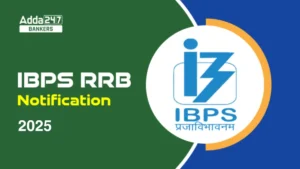Quantitative Aptitude Quiz For NIACL AO
Directions (1-5): What will come in place of (?) in the following numbers Series?
Q1. 3, 7, 23, 95, ?, 2879
3 × 2 + 1 = 7
7 × 3 + 2 = 23
23 × 4 + 3 = 95
95 × 5 + 4 = 479
479 × 6 + 5 = 2879
Q2. 2.5, 30, 300, 2400, 14400, ?
2.5 × 12 = 30
30 × 10 = 300
300 × 8 = 2400
2400 × 6 =14,400
14,400 × 4 = 57,600
Q3. 15, 28, 50, 108, 247, ?
Q4. 510, 98, 1726, ?, 4094
8³ – 2 = 512 – 2 = 510
10² – 2 = 100 – 2 = 98
12³ – 2 = 1728 – 2 = 1726
14² – 2 = 196 – 2 = 194
16³ – 2 = 4096 – 2 = 4094
Q5. 1152, 288, 864, 216, 648, 162, ?
1152 ÷ 4 = 288
288 × 3 = 864
864 ÷ 4 = 216
216 × 3 = 648
648 ÷ 4 = 162
162 × 3 = 486
Q6. The ratio of efficiency of Richa to that of Dipti is 3 : 5. If Richa and Raghu together can do the same work in 12 days and Raghu alone can complete it in 18 days then in how much time Dipti alone will complete the same work?
Q7. The ratio of present ages of P, Q and R is 3 : 4 : 5. After 4 years, the average ages of all the three will be 24 years. What was the difference between ages of Q and R, 6 years before?
Q8. In how many different ways the letters of word ‘COMBINATION’ can be arranged in order to keep the consonants always together?
Q9. The SI accrued on an amount of Rs. 22,500 at the end of four years is Rs. 10,800. What would be the CI accrued on the same amount at the same rate of interest at the end of two years?
Q10. A train can cross a tunnel in 24 seconds. Another train can cross the same tunnel in 40 seconds. If length of tunnel is 120 m and ratio of their speed is (faster to slower) 4 : 3 then after how much time both train will cross each other if both trains are running towards each other in opposite direction. (Length of faster train is 75% of that of slower train)
Directions (11-15): The following bar graph shows the percentage of male and females in five different localities of Delhi (Rest percentage is of children). Study the graph carefully and answer the related questions. Children are below 18years in age and are not classified as male and female.
Q11. If total population of Mayur Vihar is 24,000 and that of Laxmi Nagar is 48,000 then what is the difference between no. of children in these localities?
Q12. If total population of ITO is 18,000 then what is the no. of children who lives in ITO?
Q13. What is the average of the number of males in Laxmi Nagar, ITO and Connaught Place if population of Laxmi Nagar, ITO and Connaught Place is 48,000, 18,000 and 40,000 respectively?
Q14. If total population of Connaught place and Dwarka be 40,000 and 60,000 respectively then total no. of children in Dwarka is how much percent more/less than that in Connaught Place?
Q15. Find the ratio of females in Mayur Vihar and Dwarka together to the females of Laxmi Nagar and Connaught place together






 GA Capsule for SBI Clerk Mains 2025, Dow...
GA Capsule for SBI Clerk Mains 2025, Dow...
 The Hindu Review October 2022: Download ...
The Hindu Review October 2022: Download ...
 IBPS RRB 2025 Notification, Exam Date (O...
IBPS RRB 2025 Notification, Exam Date (O...





